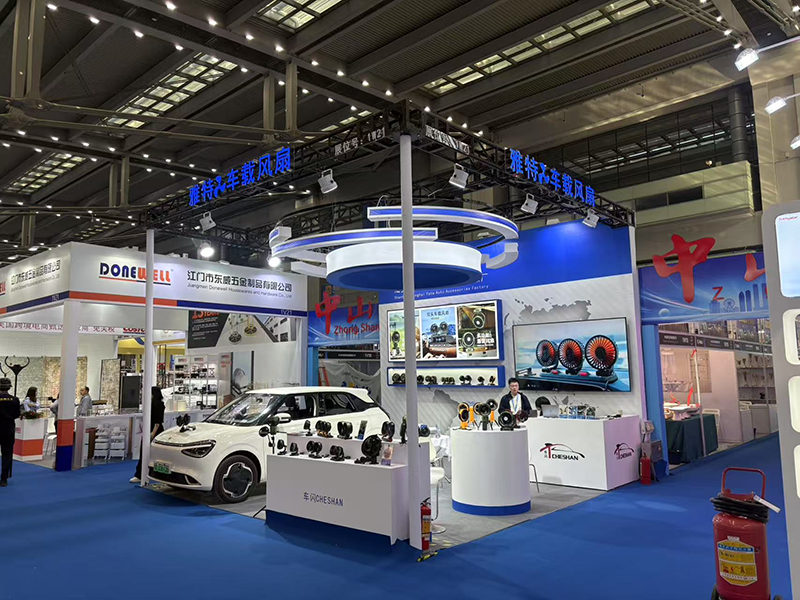U.S. Tariff Reductions on China: A Belated "Economic Relief" and Unfinished Contest

I. Policy Shift: From "Trade War" to "Pragmatic Compromise"
On May 14, the Office of the United States Trade Representative (USTR) announced a reduction of Section 301 tariffs on $18 billion worth of Chinese goods—including bicycles, apparel, and home appliances—from 7.5%-25% to 3.7%-12.5%. This marks the first substantive tariff cut on Chinese imports since the Trump administration launched the trade war in 2018, revealing the deep contradictions in U.S. economic and political calculus.
II. Behind the Cuts: Inflation Woes and Supply Chain Realities
The primary driver of this adjustment is America’s persistent inflationary pressure. In April 2024, the U.S. Consumer Price Index (CPI) rose 3.4% year-on-year, with steeper increases in furniture, electronics, and other categories dominated by Chinese exports. Retail giants like Walmart and Target have repeatedly pressured the White House, arguing that high tariffs raised inventory costs by over 30%, ultimately passed on to consumers. Tesla bluntly stated in its earnings report: “The irreplaceability of Chinese supply chains has turned tariffs into self-punishment.”
Meanwhile, the challenges of global supply chain restructuring are becoming apparent. Despite U.S. efforts to promote “friendshoring,” alternative hubs like Vietnam and Mexico struggle to absorb mid-to-high-end manufacturing due to inadequate infrastructure and fragmented supply chains. Data from the Peterson Institute for International Economics (PIIE) shows that U.S. firms have spent $1.2 trillion relocating supply chains to bypass tariffs—far exceeding the tariffs’ direct costs.
III. Winners and Losers: Who Gains? Who Resists?
Beneficiaries:
American Consumers: Prices for daily necessities like apparel and appliances could drop 5%-8%, easing pressure on low- and middle-income households.
U.S. Companies in China: Brands like Apple and Nike, reliant on Chinese production, will cut costs and boost profit margins.
Chinese Exporters: The 352 tariff-reduced product categories involve roughly 2,000 Chinese firms, primarily in machinery, electronics, and light industries.
Opposition:
U.S. Steel and Aluminum Associations: Fear cheap Chinese imports will undercut domestic industries, demanding retention of “strategic tariffs.”
Congressional Hawks: Accuse the Biden administration of “weakness toward China” and may push legislation to restrict tariff adjustments.
IV. Unresolved Tensions: Tech Containment and the "Small Yard, High Fence"
Notably, the tariff cuts deliberately exclude semiconductors, renewables, AI, and other high-tech sectors. U.S. Commerce Secretary Gina Raimondo emphasized: “Lowering tariffs on consumer goods does not mean loosening tech controls.” Since 2023, Washington has escalated chip export bans, biotech investment restrictions, and other measures-underscoring a dual strategy of “economic relief” alongside “tech containment.”
This “selective tariff reduction” exposes the paradox of U.S. policy: dependence on Chinese goods to stabilize markets, yet fear of China’s industrial ascent. As a Brookings Institution report notes: “Tariffs have shifted from an ‘economic weapon’ to a political symbol. The real battleground is innovation and industrial resilience.”
V. Future Outlook: Limited Detente and Long-Term Rivalry
In the short term, the U.S. may continue “technical adjustments” to consumer goods tariffs, but a full repeal of Section 301 duties is unlikely. China, meanwhile, must recognize the limits of “tariff dividends” as global trade rules fragment, with regional pacts like RCEP and CPTPP reshaping supply chains.
For businesses, this shift is both an opportunity and a warning: Reliance on tariff gambits is unsustainable. Only by upgrading technology and diversifying markets can firms build resilience. As a manufacturing executive in China’s Yangtze River Delta remarked: “We once prayed for tariff relief. Now we realize that true ‘moats’ are forged by our own products.”
Conclusion
America’s tariff reductions on China represent a partial victory for economic pragmatism over political confrontation. Yet this is not the end of the trade war, but a comma in the restructuring of global supply chains. When the cost of “decoupling” exceeds tolerance, realism prevails—but the next race for technological supremacy has already begun.


















